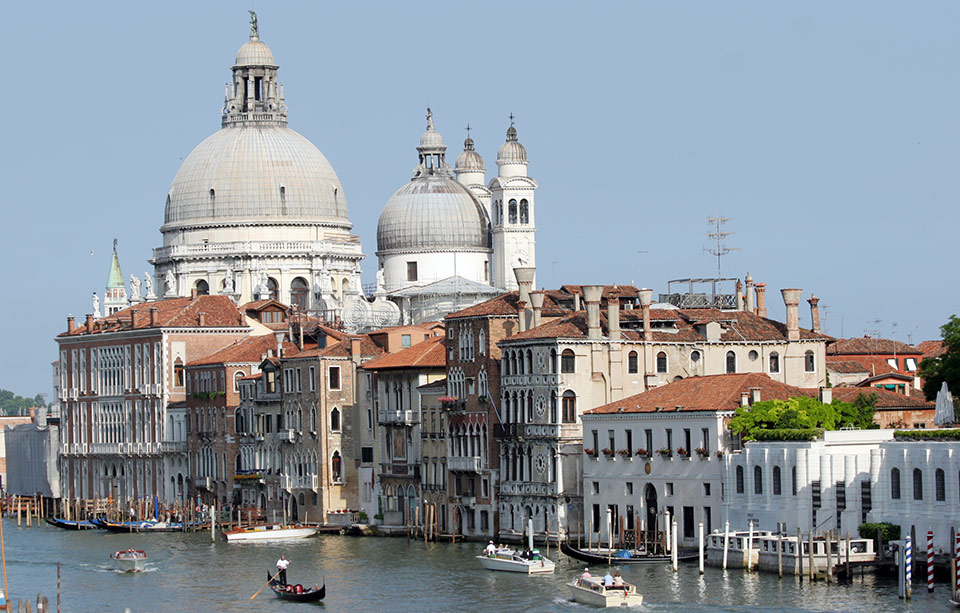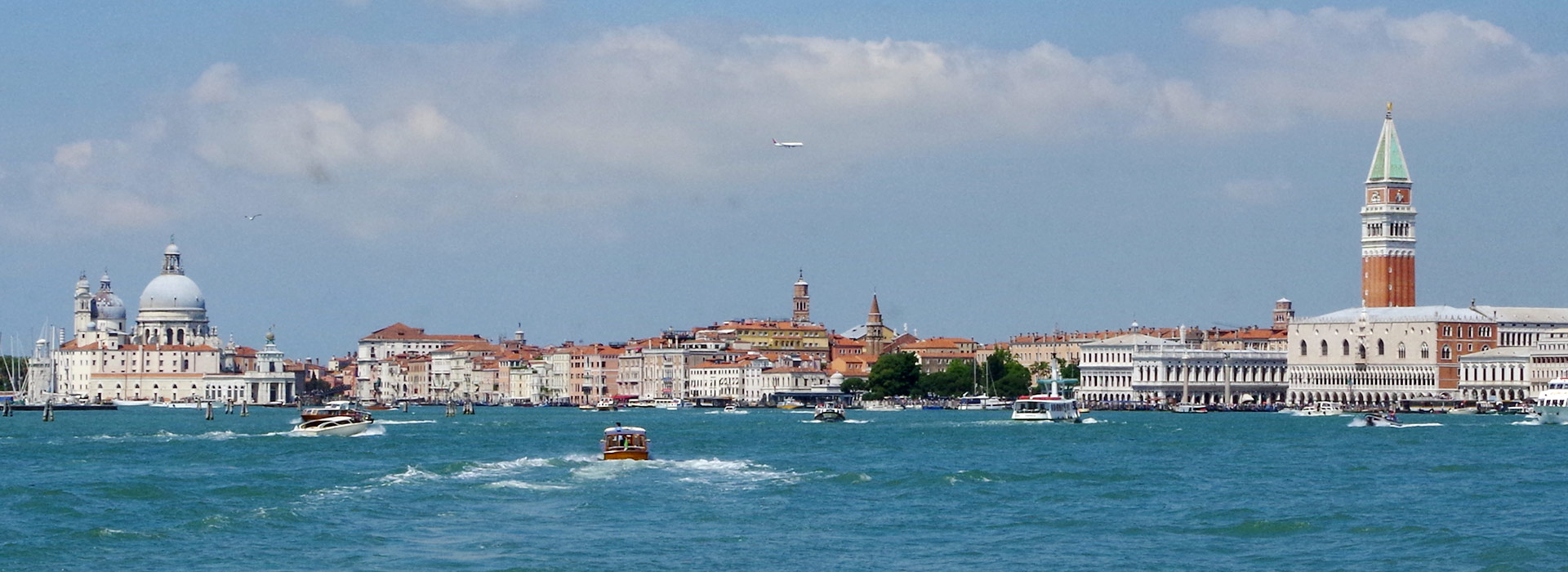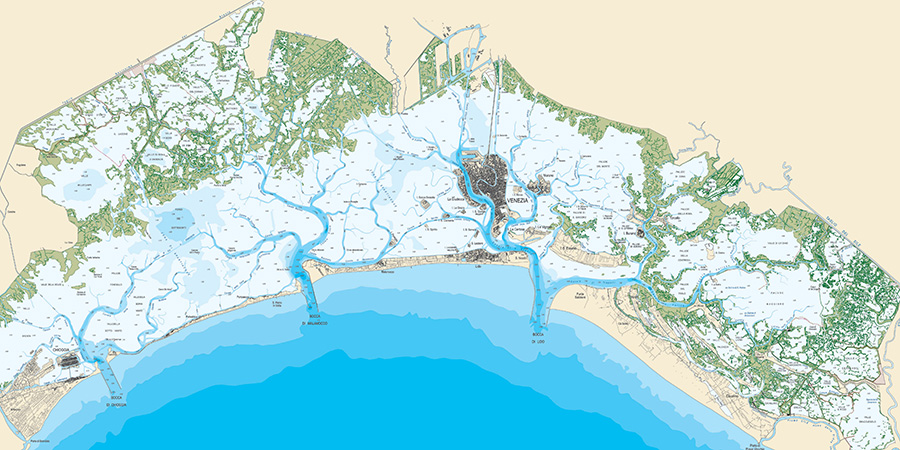Venice emerged from the water thanks to intrepid men who, fleeing from barbarian invaders, moved from the mainland to the Lagoon and achieved building a city on water that bases its wealth on salt and trade.
At the beginning of the Christian era, the sea level rose, covering part of the Veneto territory. Then it fell again. The rivers that flow from north to south down the Alps through the Po Valley or Po Valley (from the Latin name for the Po River, Padus) deposited the mud and sediment collected during their slow flow, leaving a formation of small islands and islets that rose above the sea. At the same time, the lidos (coastlines) were formed; wide sandbanks created by the pressure of the rivers and interrupted by torrents of fresh water that flowed into the open sea. This is how the Venetian Lagoon was formed, which did not become a permanent lagoon until its definitive transformation in the 11th and 12th centuries.
In the lagoon, fresh water mixes with salt water that comes in from the sea through the river mouths. Thus, twice a day, due to the effect of the high tide, sea water penetrates through the space between the lidos, renewing the water in the lagoon. The tide takes six hours to go out, so every twenty-four hours there are two high tides and two low tides, a double movement of entry and exit that purifies the waters and ensures survival in the lake basin.
Around the year 1000, there were six estuaries in the Lagoon, whereas today there are only three: the one in the port of Chioggia, the one in Malamocco and the one in Lido. The pressure of the sea and the sediments of the rivers have always been a threat to the Lagoon. To prevent its sinking, the Venetians have from time to time artificially diverted the rivers out of the Lagoon, thus ensuring the survival of the historic city of Venice.
With the arrival of Attila (452 AD), many inhabitants of the mainland found temporary refuge on the islands of the Lagoon. When the barbarians withdrew, they returned to their homes. However, in 568 AD, with the invasion of the Lombards, who intended to stay, the return was no longer possible. These refugees, who had fled to freedom, decided to stay on the islands of the Lagoon and start a new life.
The Lagoon, inhabited by people dedicated to fishing and the salt industry, was populated by the arrival of these refugees: each small island became an independent community revolving around one or more important families. The refugees from Friuli and the territories of Aquileia and Concordia found refuge in Grado and Caorle; those from Oderzo, on the island of Eraclea, which became the first political centre of the lagoons; the inhabitants of Altino took refuge in Torcello; those from Treviso, in Rialto or Malamocco; those from Padua and its surroundings, in Chioggia or Malamocco. The archipelago of islands that in the 9th century would become Venice, curiously, was at first the least populated. In order to live, the new inhabitants adapted to the place. They build stilt houses and huts with the reeds that grow in the lagoon and trade with the coastal towns, offering fish, vegetables and salt in exchange for what they cannot produce.
The increase in population will lead to a shortage of space, which forces the inhabitants not only to defend the inhabited islands from the water, but also to seize new land from the water. This operation is carried out by means of branches or reeds, with which to form barriers to the water, and the sand banks formed by the deposits of river alluvium are artificially reinforced before being able to build on them.




